B2B SaaS marketing is trickier than other, more traditional forms of marketing.
However, in 2024, there is no better way to launch a startup than by developing a niche software that serves a particular problem.
In this article, we will be taking a look at:
- What is B2B SaaS marketing and how it is different from digital marketing;
- How to develop a B2B SaaS marketing strategy of your own;
- The difference between inbound, outbound, and account-based marketing;
- How to monitor your B2B SaaS marketing performance and which metrics to focus on.
As a rapidly growing SaaS solution ourselves, we learned all of the things discussed below from experience.
And we’re more than happy to share them with you, and help you out on your own SaaS company journey in 2024.
Let’s get straight into it!
- What is B2B SaaS Marketing and How is It Different?
- How to Develop Your Own B2B SaaS Marketing Strategy?
- What Is Product/Market Fit?
- Why Should You Offer a Free Trial?
- Inbound Marketing
- Outbound Marketing
- Account-Based Marketing
- Metrics for Measure Your B2B SaaS Marketing Campaign Performance
- Now Over To You
Link building cheat sheet
What is B2B SaaS Marketing and How is It Different?
B2B SaaS marketing is a form of marketing that is specifically catered to SaaS (or software-as-a-service) products.
The main difference between SaaS B2B marketing and other forms of marketing is the fact that SaaS products are usually subscription-based, as opposed to the single-purchase nature of traditional products.
This creates a challenge for SaaS businesses: to turn a profit, they need to constantly prove that their products are worth renewing the subscription for months on end.
Also, a SaaS product is never really in its final form: to keep users engaged, new updates constantly need to be developed to introduce new features, improve user experience, and simply keep up with the competition.
This leads SaaS companies into an everlasting battle with customer churn and competition.
How to Develop Your Own B2B SaaS Marketing Strategy?
An effective marketing strategy is the way you go about achieving your business goals. Multiple strategies and tactics contribute to an overall marketing plan.
There is no “best way” to create a marketing strategy, as every business is different. Additionally, different strategies will work for businesses in different stages.
Some common goals for businesses in the early and growth stages are:
- Establishing yourself as an authority on the market
- Increasing your brand awareness
- Confirming your product/market fit
- Discovering your cost-per-lead, and customer acquisition cost
- Optimizing your conversion funnel
- Amplifying your brand through public relations efforts
- Finding a marketing channel that works best for you, and expanding upon it
If you’re in the inception phase of your SaaS business, the single most important task for you is confirming your product-market fit, which we will explain next.
What Is Product/Market Fit?
As you might have guessed, product/market fit is the measure in which your product satisfies the needs of your target market.
Achieving product/market fit means finding a market and product that can satisfy that market.
A very common reason why startups (especially SaaS ones) fail is that they don’t really achieve a product/market fit when they think they do.
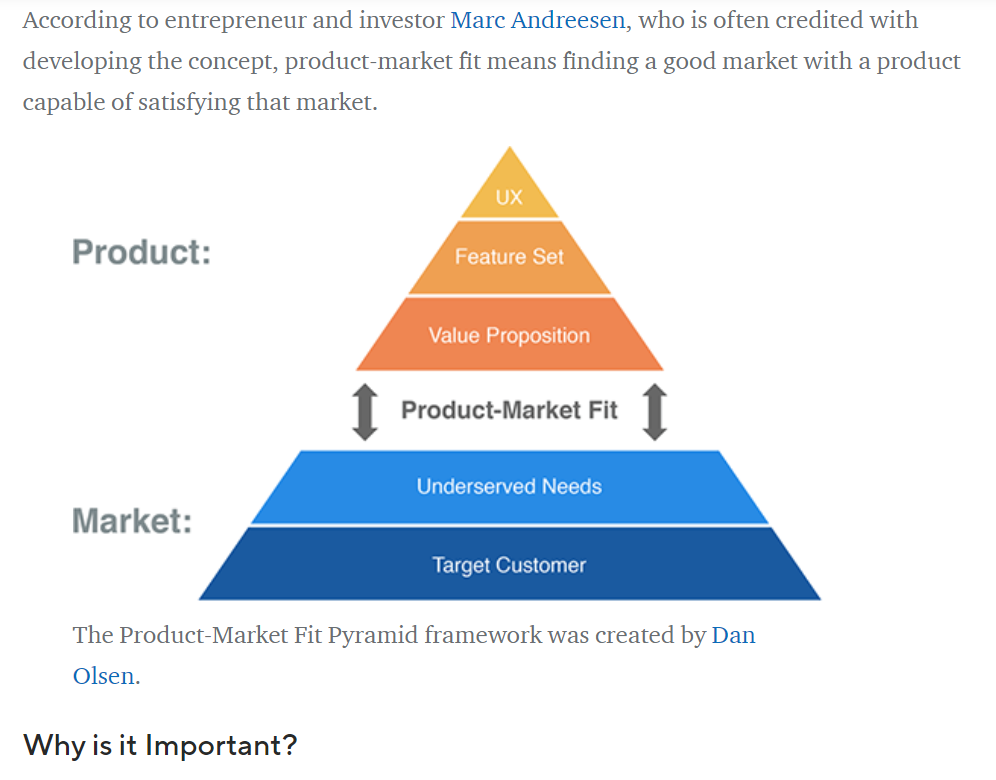
So how do you actually achieve it?
While there is no single way to ensure product/market due to the differences between each market and product, here are some steps that will help you reach it:
- Research your target market to determine whether there is a need for your product or service.
- Create a buyer persona that embodies all of the qualities of your perfect potential customer.
- Determine the problem that your product or service will solve. This is your value proposition.
- Plan out the features of your minimum viable product (MVP).
- Develop your minimum viable product.
- Test your MVP with your target audience.
- Based on your customers’ feedback, adjust your MVP.
Here are also the essential metrics to track when measuring your product/market fit:
- Growth and churn rates
- Net promoter score
- Market share
- Customer recommendations, such as reviews
- Online coverage of your company and product
Why Should You Offer a Free Trial?
In the world of software-as-a-service products, customers expect you to provide some sort of a free version of your product.
You can tackle this with three different approaches:
- Free trials (full functionality for a limited time period)
- Freemium version (unlimited free access to limited functionality)
- Personalized demos (a one-to-one call with a presentation of your product that addresses the exact needs of a given customer)
Every approach comes with its own pros and cons, which we will take a closer look at below.
However, all of these solutions work towards a singular goal, which is to let users try your software, compare it to the competition, and figure out whether it is worth subscribing to.
Free Trials
As mentioned above, free trials typically provide access to your tool’s full functionality for a limited time.
The downside to providing free trials is they can tap into your budget, especially if you have to pay data providers to keep your tool running.
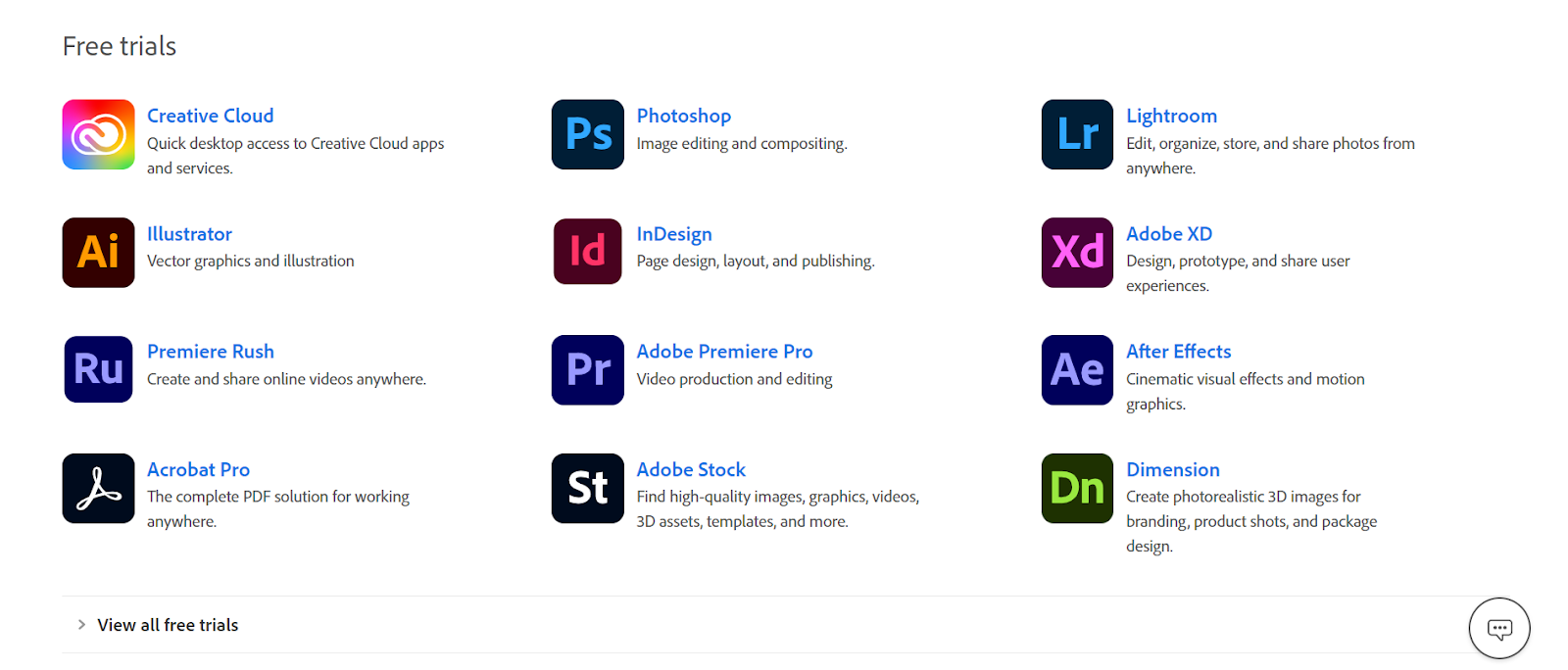
However, what sets it apart from freemium solutions is that the conversion rates for tools that provide free trials are usually a lot higher.
The reason for this is very simple: if someone decides to try the limited free trial of a paid tool, they are likely very dedicated to addressing their pain point. This especially applies to very niche products.
Freemium Versions
As opposed to free trials, freemium versions provide unlimited access to your tool for absolutely free, while gating certain features off with a price tag.
Similar to free trials, freemium versions can be very taxing on your resources.
In fact, this problem is amplified tenfold since anyone can start using your product at any time, and keep using it for as long as they want to.
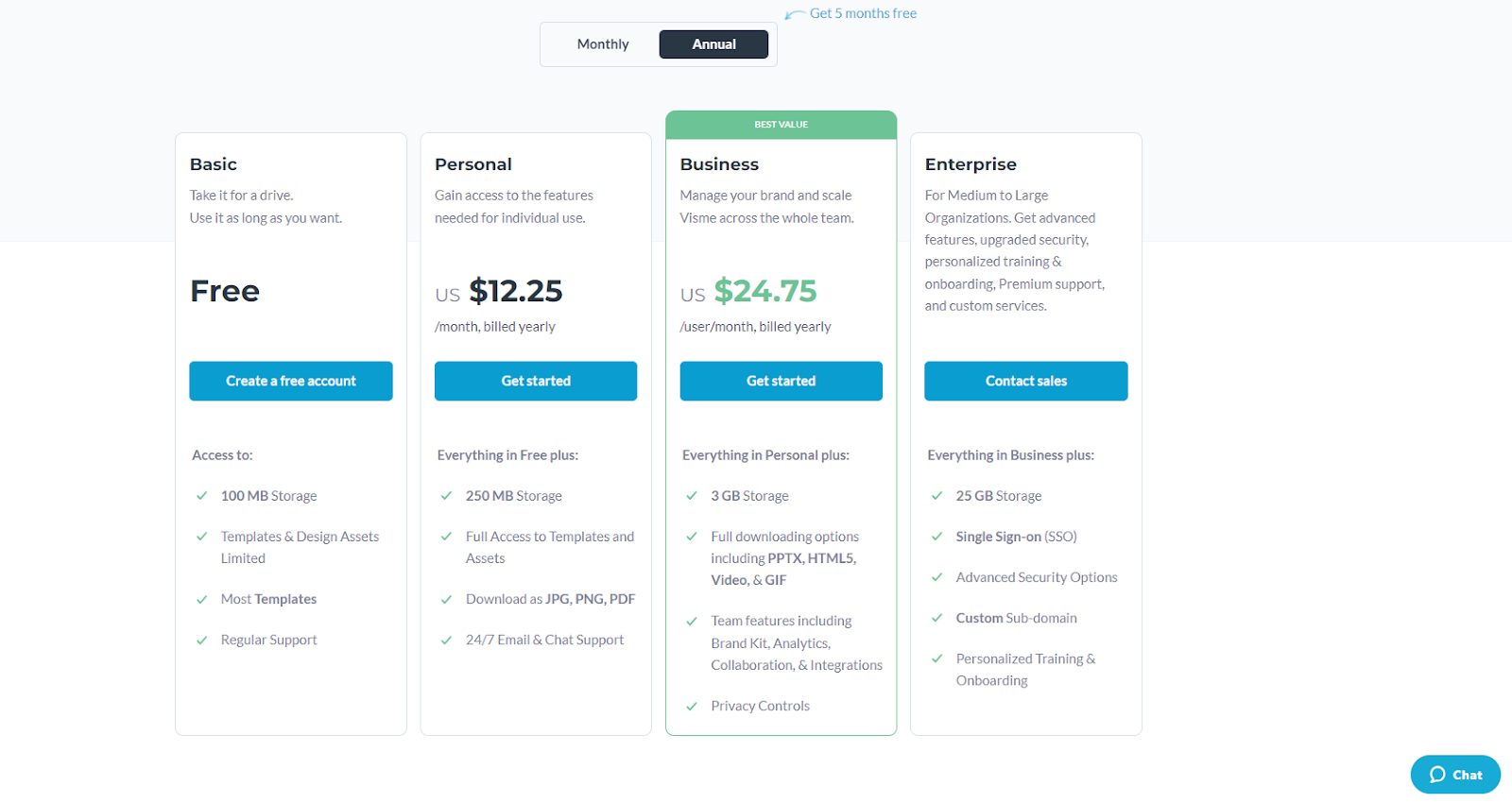
If you decide to offer a freemium version of your software, be prepared that over 90% of your users will never actually pay.
So, to turn a profit, you would require an enormous userbase since only a few percent of them are actually going to convert.
For some businesses, the number required to profit can seem like it’s unachievable, so it’s a good idea to take advantage of other revenue sources, such as placing advertisements on your products or offering additional modules that expand on the tool’s functionality.
Personalized Demos
If you’re at a stage where free trials or freemium versions are not financially viable for your business, at the very least, you should provide your customers with a personalized demo of your tool.
This allows you to establish a personal connection with your users, which is as important in business as providing a high-quality product or service.
In addition, it serves as a tutorial, enabling you to teach customers exactly how to use your software to achieve their own goals.
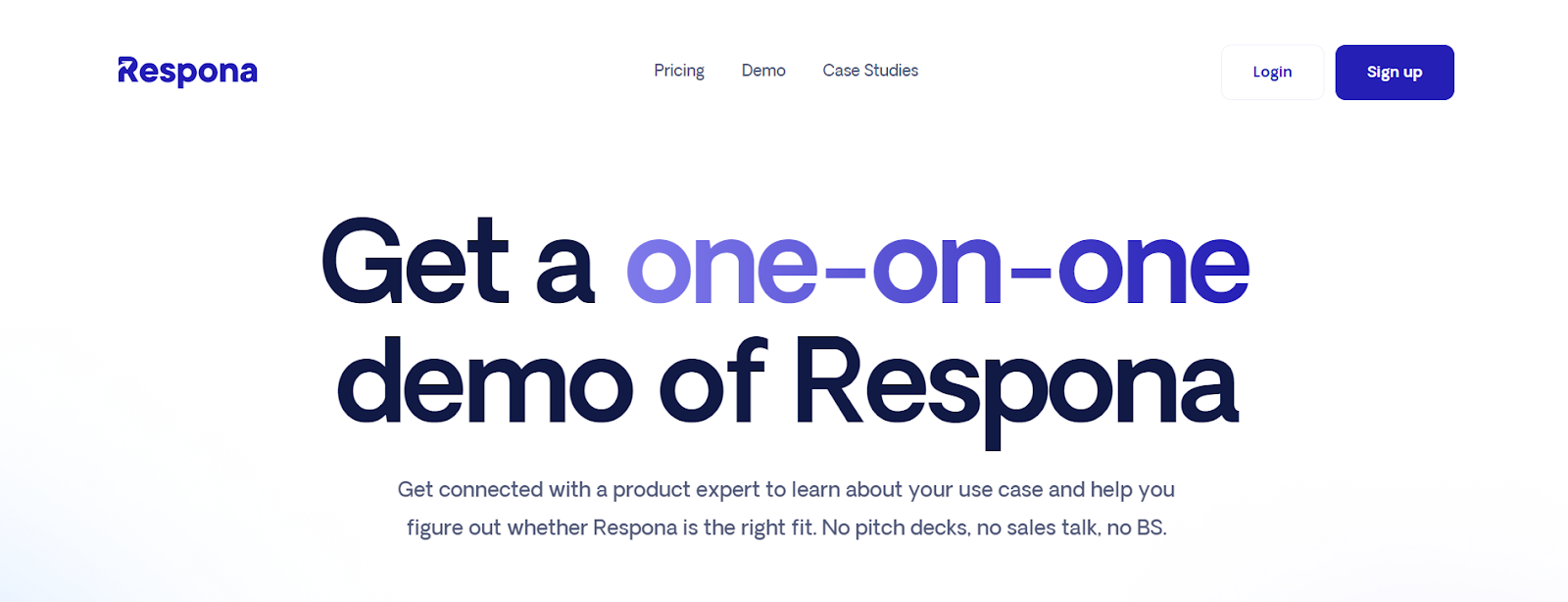
This is especially important if your tool has a steep learning curve, or if it can be used in a large variety of ways.
If you have built-in tutorials and extensive articles on how exactly to use your tool, customers will not always be able to figure it all out on their own.
Even if you are already offering free trials or a freemium version of your tool, it is extremely important to still provide customized demos for users as it massively drives up your engagement with them, and increases conversion rates.
If you find that one of these formats doesn’t work for your business as well as you expected, consider switching the formula around, but you should always allow your users some form of free access to your software.
Now that we’ve covered the basics of B2B SaaS marketing, let’s take a look at the various forms that it can take.
Inbound Marketing
As you might have guessed, the “inbound” in inbound marketing means inbound marketing channels attract customers in a way that makes them come to you, and not vice versa.
It is a type of marketing that focuses on creating and sharing content that attracts people to your company or product.
Inbound marketing is designed to help you attract customers through the use of blogs, social media marketing, and other forms of content.
Once you have attracted customers, the goal is to convert them into leads and eventually customers.
Content Marketing
Since content marketing is at the heart of all inbound marketing, this is what we’ll start with.
Content marketing is a strategic marketing approach focused on creating and distributing valuable, relevant, and consistent content to attract and retain a clearly-defined audience – and, ultimately, to drive profitable customer action.
It is an ongoing process that is best integrated into your overall marketing strategy, and it focuses on owning media, not renting it.
Your most important content marketing channel is, of course, your own blog, which you absolutely should invest the time and resources into.
In addition, it’s very much worth figuring out which social media your audience is most active on, and creating a group there.
Finally, running a video marketing campaign on YouTube might prove beneficial, and provide great opportunities to repurpose your content into more engaging and visually appealing pieces.
Search Engine Optimization
SEO is deeply intertwined with content marketing.
Publishing high-quality content is one thing, however, without any search engine optimization or promotion, your efforts will most likely go to waste.
SEO is aimed to help you rank your website at the top of Google’s search results.
Your goal should be to at least show up in the top 10, as anything that is on page 2 and beyond is virtually never clicked on.
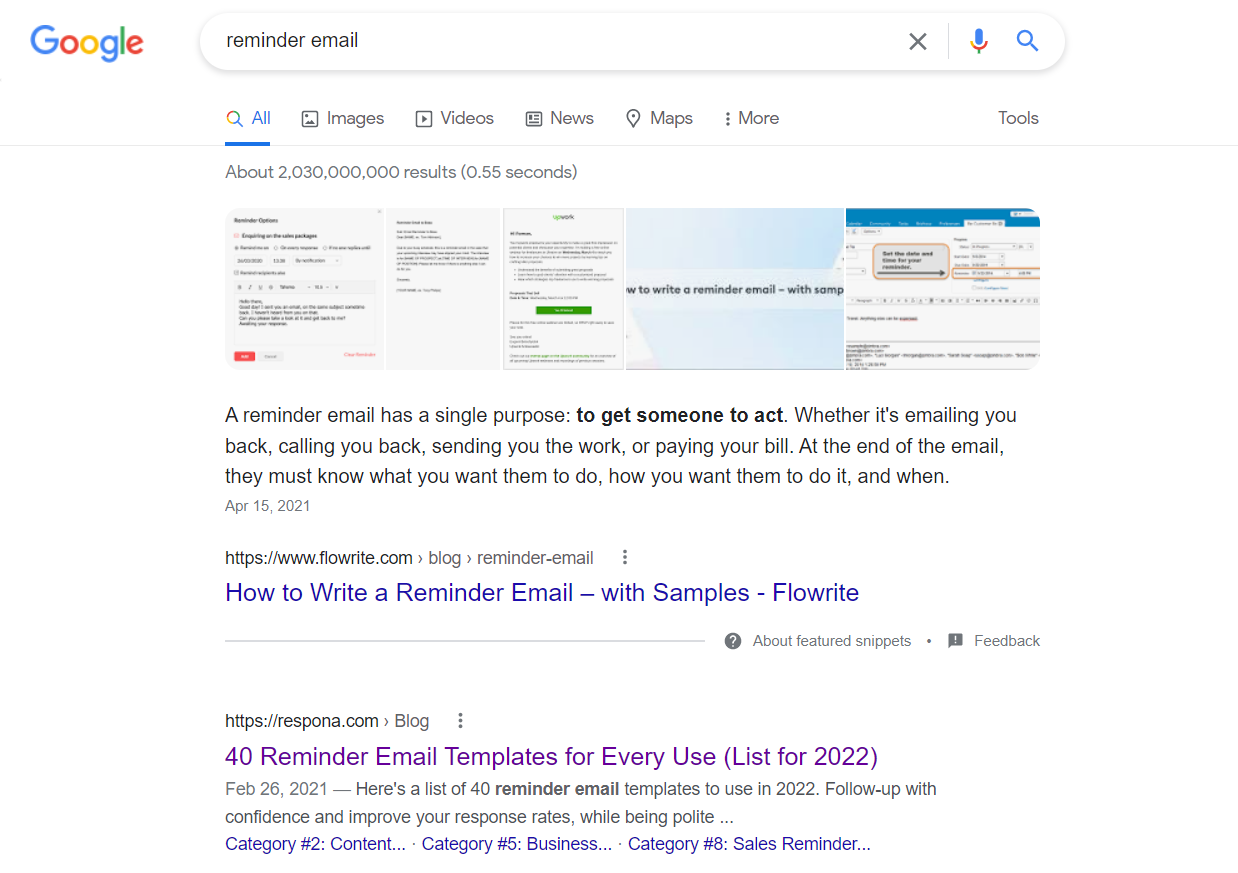
There are three faces to SEO:
- On-page SEO
- Off-page SEO
- Technical SEO
There are a lot of factors that go into on-page SEO, but at its core, on-page SEO is all about optimizing a website for Google’s search algorithm.
This means making sure that your website’s content, title tags, meta tags, and other elements are all optimized for Google’s algorithm.
Off-page SEO is all about earning backlinks and mentions of your site everywhere on the web.
Technical SEO involves making sure that the website’s back-end is properly configured and that the site’s content is well-organized and relevant to the keywords being targeted.
Technical SEO can also involve optimizing the website’s code and structure for better crawling and indexing by search engine crawlers.
User Testimonials
User testimonials are first-hand accounts of how a product or service has helped someone in their life.
They provide an unbiased, real-world perspective that can be helpful for people who are considering using a new product or service.
Testimonials can be left on a company’s website, on review sites, or on social media.
There are a few key reasons why user testimonials are one of the most powerful marketing tools for a saas B2B marketer:
1. They build trust.
When potential customers see that other people have had positive experiences with a company’s products or services, they are more likely to trust the company and give the product a try themselves.
2. They show results.
A well-written testimonial can show potential customers exactly how a B2B SaaS product or service has helped someone, and how it might be able to help them as well.
This can be especially helpful for products or services that solve specific problems.
3. They add credibility.
Testimonials from well-known or respected figures can add a lot of credibility to a company and its products or services.
This can be helpful in attracting new customers and building brand awareness.

Neal Schaffer, CEO and Author
There are a few different ways to encourage people to leave reviews of your SaaS product:
1. Make it easy to leave a review.
Make sure your product page or website has a link to where customers can leave a review.
The easier you make it, the more likely people will be to take the time to leave one.
2. Send a follow-up email.
After someone has purchased your product, send them a follow-up email asking for their feedback.
You could even offer a discount on future purchases if they leave a review.
3. Ask for reviews in person.
If you have the opportunity to speak with customers in person, be sure to ask them for their thoughts on your product.
You can then post any positive reviews you receive on your website or social media.
Influencer Marketing
Influencer marketing is a type of marketing that focuses on using key leaders to drive your brand’s message to the larger market.
Rather than marketing directly to a large group of consumers, you instead focus on targeting influential people within your target market.
These influencers can then help to promote your brand and its products or services to their own followers, helping to reach a much larger audience than you could on your own.
There are a number of ways to use influencer marketing to promote your SaaS product.
First, you can identify influencers who are already using and promoting similar products.

You can then reach out to these influencers and offer them incentives to promote your own product.
This could include giving them early access to new features or offering them discounts on your service.
You can also work with influencers to create content that promotes your product, such as video reviews or blog posts.
The influencers’ ability to “influence” their audience’s purchasing decisions can prove very useful for discovering and conquering new audiences.
Personalized Email Marketing
Email marketing sits right on the verge of inbound and outbound marketing.
It allows you to build relationships with both potential and existing customers, provides opportunities for upselling, promoting your content, sharing promo codes, and even securing cold sales.
It is a very low-cost, high-reward type of marketing, so if you haven’t already implemented it into your growth marketing mix, you should definitely consider it.
Outbound Marketing
Outbound marketing is a type of marketing where businesses proactively reach out to customers. It heavily relies on marketing automation.
The principle behind it is that businesses actively market themselves in order to reach new customers and grow their business.
As opposed to inbound marketing, where you entice customers to go to you, with outbound marketing, you will be reaching out to them directly.
The disadvantage of outbound marketing is the fact that people hate being advertised to.
Some outbound marketing techniques, such as cold calling, are typically viewed as spammy, and as such can be very tricky to pull off efficiently.
However, if you know your audience, and design your outbound marketing strategy accordingly, it can be a great way to secure new customers.
Advertisements
Just like content marketing is the heart of inbound marketing, advertisements lay at the core of outbound marketing.
I’m talking about both traditional print advertisements, and online PPC ads.
Here are the basic steps required to create a PPC advertising campaign:
- Define your goals. What do you want to achieve with your PPC ad campaign?
- Research your keywords. What words or phrases will potential customers use to search for your products or services?
- Write effective ad copy. Create ads that are relevant to your keywords and entice users to click through to your website.
- Target your ads. Choose where your ads will appear by targeting specific geographical locations, websites, or groups of users.
- Set your budget. Determine how much you’re willing to spend on your PPC ad campaign.
- Monitor your results. Keep track of your click-through rate (CTR), PPC ROI and convsersion rate to see how well your campaign is performing.
There are various PPC channels available, including Google AdWords, Facebook Ads Bing Ads, and LinkedIn.
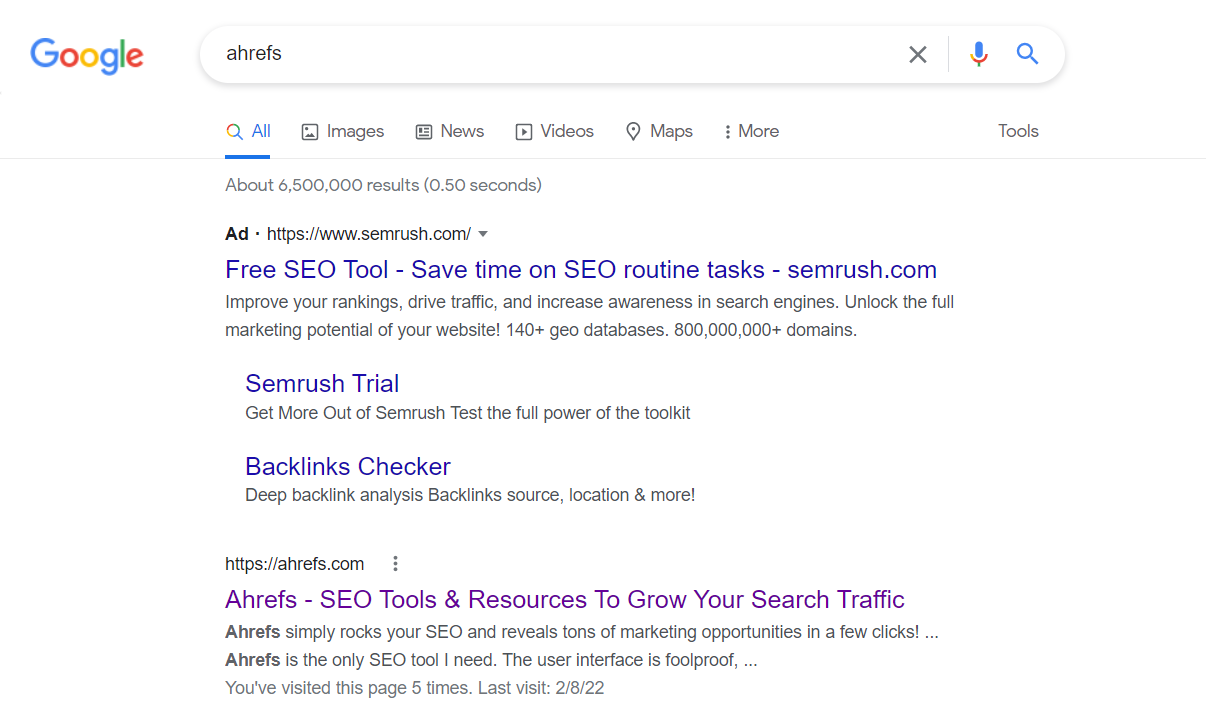
Depending on your audience, some PPC channels might work better than others.
Make sure to constantly monitor the performance of your ad campaigns and tweak them accordingly.
Cold Calling
Cold calling is the process of making unsolicited phone calls to potential customers in an attempt to sell a product or service.
The call is considered “cold” because the caller has no prior relationship with the person being called and is not expecting a call.
The Wolf Of Wall Street is a great movie, however, in reality, the success rate of cold calls is extremely low.
Most people simply drop the phone or don’t even pick it up if an unknown number is calling them.
In 2024, cold calling has pretty much died out as a B2B marketing practice, but it can work if you manage to acquire the contact information of company higher-ups and if your value proposition actually helps them solve a considerable pain point.
Events And Webinars
Events and webinars are a great marketing strategy for your SaaS business for a number of reasons.
First, they help you to build relationships with potential and current customers.
These events provide an opportunity for you to show off your product and speak directly to your target audience.

Additionally, they can be a great way to generate leads and build your brand awareness.
And, most importantly, they allow you to establish yourself as an authority within your niche, which is essential to building up a loyal customer base.
Account-Based Marketing
Account based marketing or ABM is very different from traditional inbound and outbound marketing techniques.
A mixture of both, ABM is a targeted marketing strategy that focuses on key accounts that are most likely to convert into customers and keep them a customer for as long as possible.
In ABM, every single SaaS customer account is treated as its own little SaaS market.
It is a highly involved and personalized strategy that joins the B2B SaaS marketing team and sales team to work together towards a common goal – which is something no B2B SaaS marketing agency can help you with.
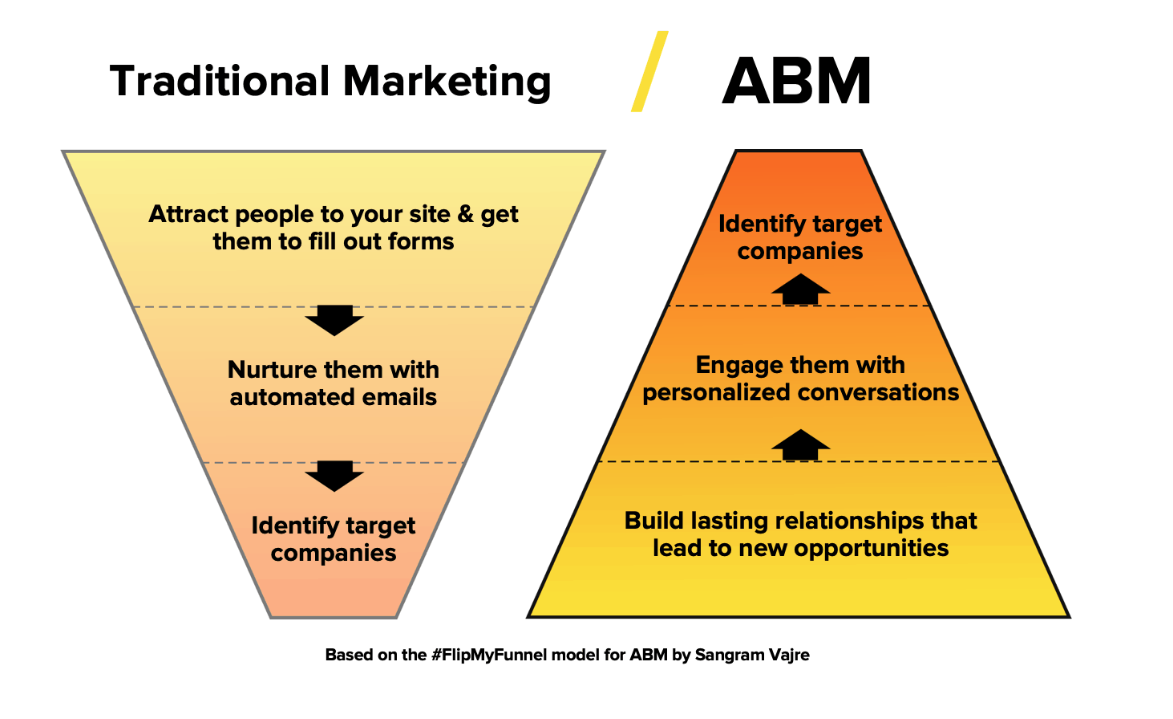
There are a few key advantages of account-based marketing for SaaS businesses:
- Greater focus on key accounts: In account-based marketing, businesses focus their marketing effort on a select number of key accounts that offer the greatest opportunity for revenue growth. This allows businesses to better tailor their marketing message and offerings to the specific needs of each account.
- Increased visibility into the sales pipeline: Because account-based marketing provides greater visibility into the sales pipeline, businesses can more effectively track the progress of each account and adjust their marketing strategies accordingly.
- Improved ROI: Account-based marketing typically leads to improved ROI because businesses are able to invest their marketing resources more efficiently.
- Stronger relationships with key accounts: By taking a more targeted approach to marketing, businesses can build stronger relationships with their key accounts. This can lead to improved customer retention and increased upselling opportunities.
The common problems that account-based marketing can solve for saas businesses are:
- Increasing customer acquisition and market share
- Increasing customer loyalty and satisfaction
- Increasing customer lifetime value
- Increasing brand awareness and visibility
- Increasing sales and revenue
There are four key components of account-based marketing:
- Identifying and targeting key accounts: This involves identifying the key accounts that are most likely to generate revenue for your business and then targeting them with personalized marketing campaigns.
- Creating personalized content: This content must be tailored to the specific needs and interests of each key account.
- Engaging multiple stakeholders: It is important to engage all decision-makers within a key account in your marketing efforts.
- Measuring success: You must track the results of your account-based marketing campaigns and continuously optimize your approach.
Metrics for Measure Your B2B SaaS Marketing Campaign Performance
Measuring the performance of your marketing campaigns is as important as planning them out.
For SaaS companies, the most important metrics to focus on can be quite different than those useful for more traditional businesses.
In this section, we will be looking at 8 crucial effective SaaS marketing performance metrics.
Traffic
Organic traffic is typically used to measure the performance of your content marketing and search engine optimization efforts. Google Analytics provides the most accurate traffic numbers.

And while high traffic does not always equal high revenue (and as such often considered a vanity metric by some marketers), constant traffic increase is an indicator of a healthy website that’s actively bringing in free leads.
On the other hand, stagnating or even dropping traffic numbers mean that your market strategy needs some re-evaluation.
Conversion Rate
Conversion rate is the percentage of people who take the desired action out of the total number of people who were exposed to an offer, google ad, or message.
This metric is important to measure for a SaaS business because it allows you to track how effective your marketing and sales efforts are in terms of generating new customers or leads.
Ideally, you should be measuring your conversion rates at every single step of your sales funnel to get the whole picture:
- Lead
- Qualified lead
- Lead to qualified lead conversion (the number of leads who turn into qualified leads over a period of time)
Lead Quality
Your lead quality is a measure of how likely a lead is to convert into a paying customer.
There are a number of factors that can influence lead quality, including the source of the lead, the lead’s demographics, and the lead’s behavior.
There are a number of ways to measure lead quality.
One common method is to score leads based on their likelihood to convert, with higher scores indicating higher quality.
Another method is to track the conversion rate of leads over time.
Cost Per Lead (CPL)
Cost per lead (CPL) is a metric that measures the average cost to acquire a new lead for a SaaS business.
To calculate CPL, divide the total marketing and sales expenses by the number of new leads generated.
CPL is an important metric to track because it helps a business determine how efficiently its marketing and sales efforts are converting leads into customers.
A high CPL indicates that a business is spending more than it should to acquire new leads, while a low CPL suggests that its marketing and sales efforts are more efficient.
Customer Churn
Customer churn is the percentage of customers who stop using a company’s product or service during a given time period.
To measure customer churn, businesses typically calculate the number of customers who cancel their subscription or do not renew their contract divided by the total number of customers at the beginning of the period.
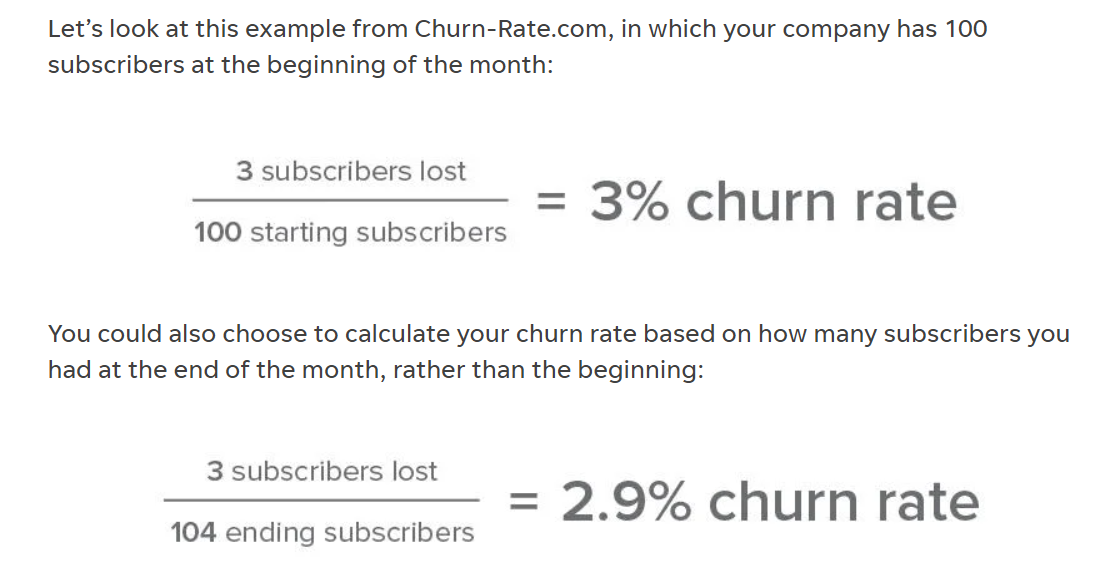
Customer churn is an important metric to track for a SaaS business because it can indicate whether the B2B SaaS company is losing or gaining customers.
A high churn rate may suggest that the company’s products or services are not meeting customer needs, which could lead to a decline in revenue.
Customer Lifetime Value (CLV)
Customer lifetime value (CLV) is a metric that represents the total value a customer will bring to a business over the course of their relationship.
This includes not only the revenue they generate through purchases but also the value of any referrals (if you use referral or affiliate marketing) or other benefits they may bring.
CLV can be measured in a number of ways, but the most common approach is to look at the average revenue generated per customer over a certain period of time.
This can be done by looking at historical data, or by using predictive modeling to estimate future CLV.
CLV is important for a SaaS business because it can help inform decisions about acquisition and retention strategies.
For example, if a business knows that the average CLV for its customers is $1,000, it can be more willing to spend more to acquire a new customer, knowing that they will eventually generate a good return on investment.
Similarly, if a business knows that it costs $500 to retain an existing customer, it will be more likely to invest in retention efforts in order to keep them from leaving.
Ultimately, CLV is a valuable metric because it can help businesses make more informed decisions about how to allocate their resources in order to maximize growth and profitability.
Customer Acquisition Cost (CAC)
Customer acquisition cost (CAC) is the total amount of money that a company spends on marketing and sales in order to acquire new customers.
It can be measured by dividing the total amount spent on marketing and sales by the number of new customers acquired during that period.
Customer acquisition cost is an important metric to track for a SaaS business because it allows the company to see how much it is spending to acquire new customers and whether or not that spending is sustainable.
CAC to LTV Ratio
CAC to LTV Ratio is a metric that measures the customer lifetime value (LTV) of a SaaS business relative to its customer acquisition costs (CAC).
This ratio is important to track because it provides insight into the long-term viability of a SaaS business.
A high CAC to LTV ratio indicates that a business is spending more to acquire customers than it is generating in revenue from those customers.
This is not a sustainable business model and will eventually lead to the failure of the business.
A low CAC to LTV ratio, on the other hand, indicates that a business is generating more revenue from its customers than it is spending to acquire them.
This is a sustainable business model and is more likely to lead to long-term success.
Link building cheat sheet
Now Over To You
B2B SaaS marketing can be a very tricky endeavor, especially if you operate in a highly competitive niche.
This guide covered all of the basics of software-as-a-service marketing that you need to know in order to get started.
Marketing a piece of software is definitely a lot of work. If you need help promoting your most recent pieces of content or building links, start your 14-day free trial with us to learn how we can help you.







